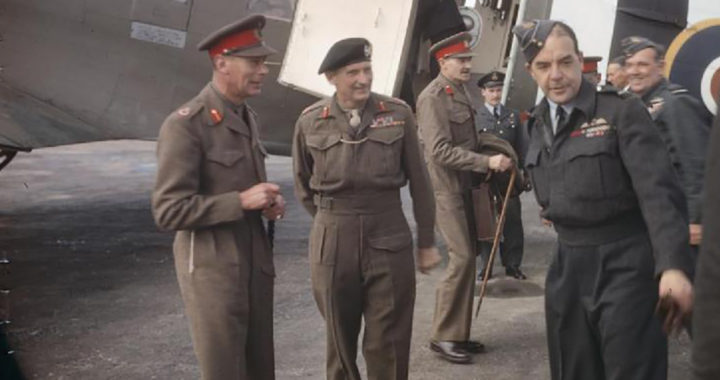King George VI became the King of the United Kingdom and the Dominions of the British Commonwealth on 11 December 1936 after the abdication of his older brother, King Edward VIII, who later became the Duke of Windsor. Although his ascension to the throne came as a surprise, he became the symbol of British determination and national resistance during the Second World War.
What Did King George VI Do During the Second World War?
The Military Background of then Prince Albert
Note that before becoming King George VI, then Prince Albert attended the Royal Naval College, Osborne, and progressed to the Royal Naval College, Dartmouth. During the First World War, he was a turret officer aboard the HMS Collingwood battleship during the Battle of Jutland that spanned from 21 May to 1 June 1916. However, due to his poor health condition from duodenal ulcer, he did not see further combat.
He later transferred from the Royal Navy to the Royal Air Force in 1918 and eventually completed his training, took command of a squadron on Cadet Wing, and became the first fully qualified and certified pilot in the British royal family. He further qualified as an RAF pilot and was promoted to squadron leader in 1919.
The Role of the King During the Second World War
The military service of Prince Albert essentially ended when he became King George VI following the abdication of King Edward VIII. Hence, as the reigning monarch during the Second World War that lasted from 1939 to 1945, he did not participate in the battlefronts.
Nonetheless, historians and the British public have regarded him as a key figure during the war because he became a symbol of determination and national resistance against Nazi Germany. The following were the specific roles and contributions of King George VI during World War 2:
• King George VI held the ranks of Admiral of the Fleet, Field Marshal, and Marshal of the Royal Air Force. However, he had no military role during the war. As the reigning monarch, he held weekly private meetings with Prime Minister Winston Churchill to discuss the war in secrets.
• He visited the United States in the Summer of 1939 to support further Anglo-American relations, thus reassuring the alliance between the British and the Americans, and the rest of the Allied forces.
• The King refused to move away from London. His wife, the Queen Mother Elizabeth, stayed with him in the Buckingham Palace while his two daughters, the Princesses Elizabeth and Margaret, stayed in Windsor Castle.
• Note that the Buckingham Palace was bombed several times by the Nazis. For Nazi Germans, bombing the palace would sow defeatism and despair in Britain. However, the public felt that the King and Queen shared the same dangers as the rest of the country.
• Furthermore, the entire royal family and the royal households were also under the British rationing restrictions, thus sharing the same deprivations as with the public.
• He also allowed members of the royal family to play whatever role during the war. For example, Princess Elizabeth, who later became Queen Elizabeth II, fulfilled several official royal and military duties during the war.
• The King and Queen visited army barracks, munition factors, and bomb sites across the United Kingdom, thus supporting the war efforts at home and boosting public morale with every appearance they made.
FURTHER READINGS AND REFERENCES
- Judd, D. 1982. King George VI. London: Michael Joseph. ISBN 978-0-7181-2184-6.
- Mason, A. 9 January 2018. “What the Royal Family Did during the Second World War.” Imperial War Museum. Available online
- The Royal Household. n.d. “Queen Elizabeth, the Queen Mother.” The Royal Household. Available online






